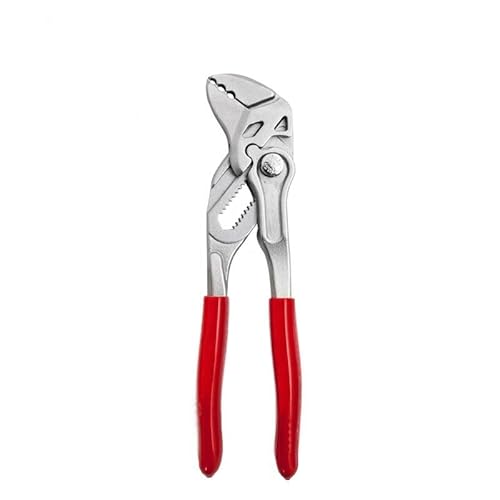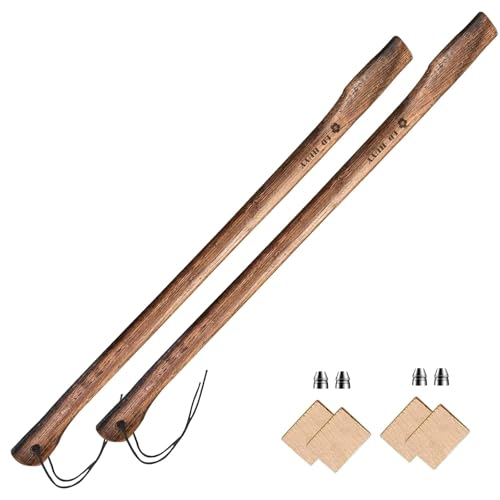




One of the most important tools for any outdoorsman or carpenter is a reliable axe. But even the best axe head is useless without a sturdy handle. Making an axe handle by hand is not only a practical skill to have, but it also allows you to customize the handle to fit your unique needs and preferences.
To start, you’ll need to select the right type of wood for your axe handle. While there are many options available, hickory is a popular choice due to its durability and shock-absorbing properties. Once you have your wood selected, you’ll need to rough out the shape of the handle using a hatchet or saw. It’s important to leave the handle slightly thicker than desired, as you’ll be refining its shape later on.
Next, you’ll want to carefully shape the handle using a drawknife or spoke shave. This step requires patience and precision, as you’ll be shaping the handle to fit comfortably in your hand. Be sure to leave a slight bulge in the middle of the handle, as this will provide a better grip and prevent slippage. Once you’re satisfied with the shape, you can begin the process of smoothing and refining the handle using sandpaper or a scraper tool.
Lastly, it’s important to protect your newly crafted axe handle by applying a finish. This can be done using linseed oil, varnish, or another type of wood finish of your choosing. Applying multiple coats will ensure that the handle is well-sealed and protected against the elements. Allow the finish to dry completely before attaching the axe head to the handle.
By following these steps and putting in the necessary time and effort, you can create a high-quality axe handle that will serve you well for years to come. Remember to take proper safety precautions while working with sharp tools, and don’t be afraid to get creative and add your own personal touch to the handle design.
Preparing the Wood
Before you start making your axe handle, you need to choose the right piece of wood. It should be strong and durable, preferably hardwood such as hickory, ash, or oak. Softwoods like pine are not recommended as they are prone to splitting.
Once you have selected the wood, you will need to prepare it for carving. Start by removing the bark from the log using a sharp knife or a drawknife. This will expose the fresh wood and make it easier to work with.
Selecting the Grain
Next, you need to identify the direction of the grain in the wood. The grain refers to the alignment of the wood fibers and it can vary from piece to piece. Look for the long, parallel lines that run along the length of the log.
It is important to align the axe handle with the grain as it will add strength and durability to the finished product. Splitting the wood along the grain will be easier and less likely to result in splits or cracks.
Drying the Wood
If you are using green wood, meaning freshly cut wood, it is necessary to dry it before carving. Green wood contains a lot of moisture, and if you carve it right away, it may shrink or warp as it dries.
To dry the wood, you can either air dry it by leaving it in a well-ventilated area for several months, or speed up the process by using a kiln or a dehumidifier. Make sure the wood is completely dry before proceeding with the next steps.
By properly preparing the wood, you will ensure that your axe handle is strong, durable, and resistant to splitting. Take the time to choose the right wood, remove the bark, select the grain, and dry the wood, and you will be well on your way to crafting a high-quality axe handle by hand.
Choosing the Right Wood
When selecting the wood for your axe handle, it’s important to choose a durable and strong type of wood that can withstand the demands of chopping and splitting wood. Here are some factors to consider when choosing the right wood:
- Hardwood vs. Softwood: Hardwoods, such as hickory, ash, and oak, are generally stronger and more durable than softwoods, like pine or cedar. They are less likely to break or splinter under pressure, making them a popular choice for axe handles.
- Straight Grain: Look for wood with a straight and even grain pattern. A straight grain provides better strength and stability, reducing the chances of the handle splitting or breaking when in use.
- Moisture Content: It’s important to select wood with a low moisture content. Wood that is too wet or green can shrink or warp as it dries, causing the handle to become loose or unstable over time.
- Density: Opt for wood with a high density, as it tends to be stronger and more resistant to impact. Denser woods also have a better weight-to-strength ratio, providing better balance and control when swinging the axe.
Remember that different types of wood have different characteristics, so it’s important to do some research and choose the one that best suits your needs and preferences. Taking the time to select the right wood will ensure a durable and reliable axe handle that will last for years to come.
Cutting and Shaping the Wood
When making an axe handle by hand, the first step is to select a suitable piece of wood. The type of wood you choose will depend on your preferences and availability, but hardwoods like hickory or ash are commonly used due to their strength and durability.
Once you have the wood selected, you will need to cut it to the desired length for your axe handle. Use a saw to make a straight and clean cut, ensuring that the ends are square and even.
Next, it’s time to shape the wood into the desired profile for your axe handle. This can be done using a combination of tools such as a drawknife, spokeshave, and rasps. Start by removing excess material and rough shaping the handle, gradually refining the shape as you go.
When shaping the wood, keep in mind the ergonomic requirements of an axe handle. It should be comfortable to hold and provide a secure grip. You may want to experiment with different handle shapes until you find one that suits your hand and grip style.
As you shape the wood, periodically check the balance and symmetry of the handle. It should be evenly shaped and balanced, allowing for smooth and controlled swings when using the axe.
Finally, once you are satisfied with the shape and feel of the axe handle, sand it down to remove any rough edges or imperfections. Start with a coarse-grit sandpaper and gradually work your way up to a finer grit for a smooth finish.
Remember to take your time and pay attention to detail when cutting and shaping the wood for your axe handle. The finished product will be a handle that not only looks great but also feels comfortable and performs well.
| Tools Needed: |
|---|
| – Saw |
| – Drawknife |
| – Spokeshave |
| – Rasps |
| – Sandpaper (coarse and fine grit) |
Carving the Handle
Once you have selected a suitable piece of wood for your axe handle, it is time to start carving. First, secure the wood in a vice or clamp to ensure it does not slip while you work. This will help you maintain control and make precise cuts.
Using a drawknife or carving axe, begin shaping the handle. Start by removing large chunks of wood to create a basic shape. Be sure to keep the handle well balanced and symmetrical.
As you carve, periodically check the fit of the handle in the axe head. It should be snug and secure, with no wobbling or movement. Adjust the shape of the handle as needed to achieve a proper fit.
Next, refine the shape of the handle using a spokeshave or rasp. These tools will allow you to smooth out any rough edges and create a comfortable grip.
Pay attention to the grain of the wood while you carve. Aim to carve along the grain as much as possible to prevent splitting or weakening the handle. A handle made with the grain will be stronger and more durable.
Once you are satisfied with the shape and feel of the handle, sand it smooth with fine grit sandpaper. This will remove any remaining roughness and make the handle pleasant to hold.
Finally, apply a finish to the handle to protect it from moisture and wear. Linseed oil or a high-quality wood finish can help preserve the wood and enhance its natural beauty.
Carving an axe handle by hand may take time and practice, but the result will be a custom handle that fits your grip perfectly and adds a personal touch to your axe.
Finishing and Treating the Handle
Once you have shaped the axe handle to your desired dimensions, it is important to finish and treat the wood to protect it from moisture and enhance its durability.
1. Sanding: Begin by sanding the handle with coarse sandpaper to remove any rough surfaces and make it smooth. Gradually move to finer grit sandpaper to achieve a polished finish.
2. Stain or Oil: Applying a stain or oil finish can help protect the wood and enhance its appearance. Choose a color that complements the wood grain and apply it evenly, following the manufacturer’s instructions.
3. Sealant: Apply a high-quality sealant to the handle, such as lacquer or polyurethane, to protect it from moisture and wear. Multiple coats may be necessary for optimal protection.
4. Drying Time: Allow the handle to dry completely between each step of the finishing process. Follow the recommended drying time on the product labels to ensure the best results.
5. Periodic Maintenance: Keep the axe handle well-maintained by periodically applying a fresh coat of oil or sealant to protect it from wear and maintain its durability.
Remember, a properly finished and treated axe handle will not only enhance its lifespan but also improve your grip and overall axe performance. Take the time to properly finish and treat the handle for the best results.








